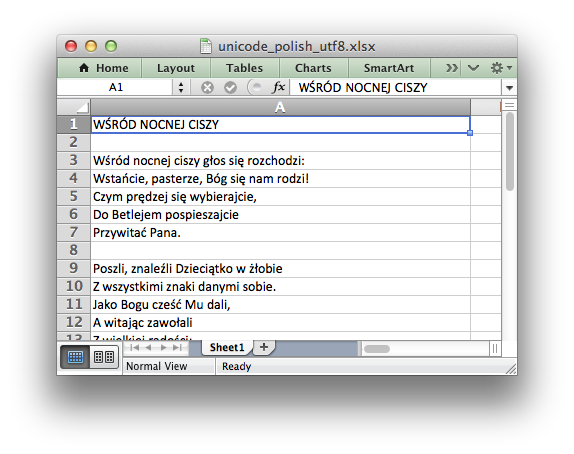
- #String to utf 8 converter software
- #String to utf 8 converter code
- #String to utf 8 converter windows
For example, Qt, Java and the International Components for Unicode (ICU) library, just to name a few, use UTF-16 encoding to store Unicode strings.
#String to utf 8 converter software
UTF-16 is the “native” Unicode encoding in many other software systems, as well.
#String to utf 8 converter windows
UTF-16 is basically the de facto standard encoding used by Windows Unicode-enabled APIs. According to recent W3Techs statistics available at bit.ly/1UT5EBC, UTF-8 is used by 87 percent of all the Web sites it analyzed. UTF-8 is the most-used Unicode encoding on the Internet. In contrast, the Japanese ideograph 学 (code point U+5B66) is encoded in UTF-8 as the three-byte sequence 0圎5 0xAD 0xA6.
#String to utf 8 converter code
This is an important feature when exchanging text across different computing systems that can have different hardware architectures with different endianness.Ĭonsidering the two Unicode characters I mentioned before, the capital letter C (code point U+0043) is encoded in UTF-8 using the single byte 0x43 (43 hexadecimal), which is exactly the ASCII code associated with the character C (as per the UTF-8 backward compatibility with ASCII). The UTF-8 encoding (unlike UTF-16) is endian-neutral by design.

Second, because Unicode text encoded in UTF-8 is just a sequence of 8-bit byte units, there’s no endianness complication.

In other words, valid ASCII text is automatically valid UTF-8-encoded text. First, it’s backward-compatible with ASCII this means that each valid ASCII character code has the same byte value when encoded using UTF-8. It was designed with two important characteristics in mind. UTF-8, as its name suggests, uses 8-bit code units. Therefore, conversions between these two encodings are lossless: No Unicode character will be lost during the process. The Unicode standard defines several encodings, but the most important ones are UTF-8 and UTF-16, both of which are variable-length encodings capable of encoding all possible Unicode “characters” or, better, code points. Basically, a Unicode encoding is a particular, well-defined way of representing Unicode code point values in bits. For a programmer, the question is: How are these Unicode code points represented concretely using computer bits? The answer to this question leads directly to the concept of Unicode encoding. From Abstract Code Points to Actual Bits: UTF-8 and UTF-16 EncodingsĪ code point is an abstract concept, though. Currently, the Unicode standard defines more than 1,114,000 code points. So, for example, the Japanese kanji ideograph 学, which has “learning” and “knowledge” among its meanings, is associated to the code point U+5B66. Note that Unicode is an industry standard that covers most of the world’s writing systems, including ideographs. For example, the code point associated to the character “C” is U+0043. According to the official Unicode consortium’s Web site ( bit.ly/1Rtdulx), “Unicode provides a unique number for every character, no matter what the platform, no matter what the program, no matter what the language.” Each of these unique numbers is called a code point, and is typically represented using the “U+” prefix, followed by the unique number written in hexadecimal form. Unicode is the de facto standard for representing international text in modern software. UTF with higher bits encoding will gain the opposite resource consuming.Volume 31 Number 9 Unicode Encoding Conversions with STL Strings and Win32 APIs “The conclusion is UTF with lower bits encoding will save the space resource but consume more compute resource.

It has become more effective for high range characters or new emoticon symbol. UTF-32 is not widely used at the present because it needs amounts of space. The point is located space is the same as UTF-8 but it is easier to compute faster for middle range characters (000080 – 00FFFF). UTF-16 become more friendly programming on Asia alphabets and special symbols. The consequence is the system needs to compute 2 times for a character. However, for other languages particularly on Asia alphabet require more than 2 bytes to store in each character. The lower code range (000000 – 00007F) which is used for ASCII (Most of the American standard characters) will take this benefit completely. UTF-8 required lower space of disk and memory because it uses 8 bits to store the data. As we see in the Unicode encoding table, each version of UTF requires various resources.


 0 kommentar(er)
0 kommentar(er)
